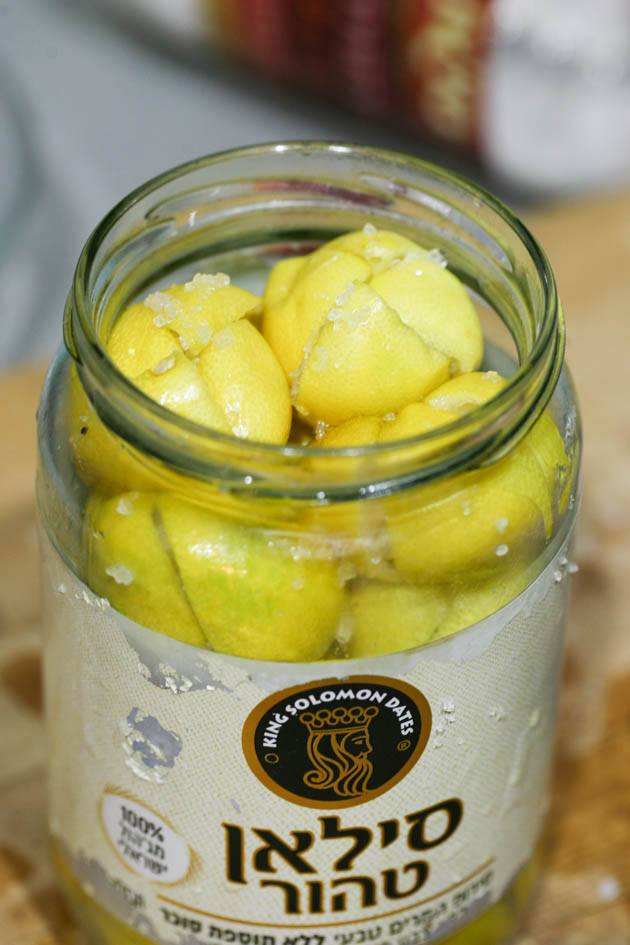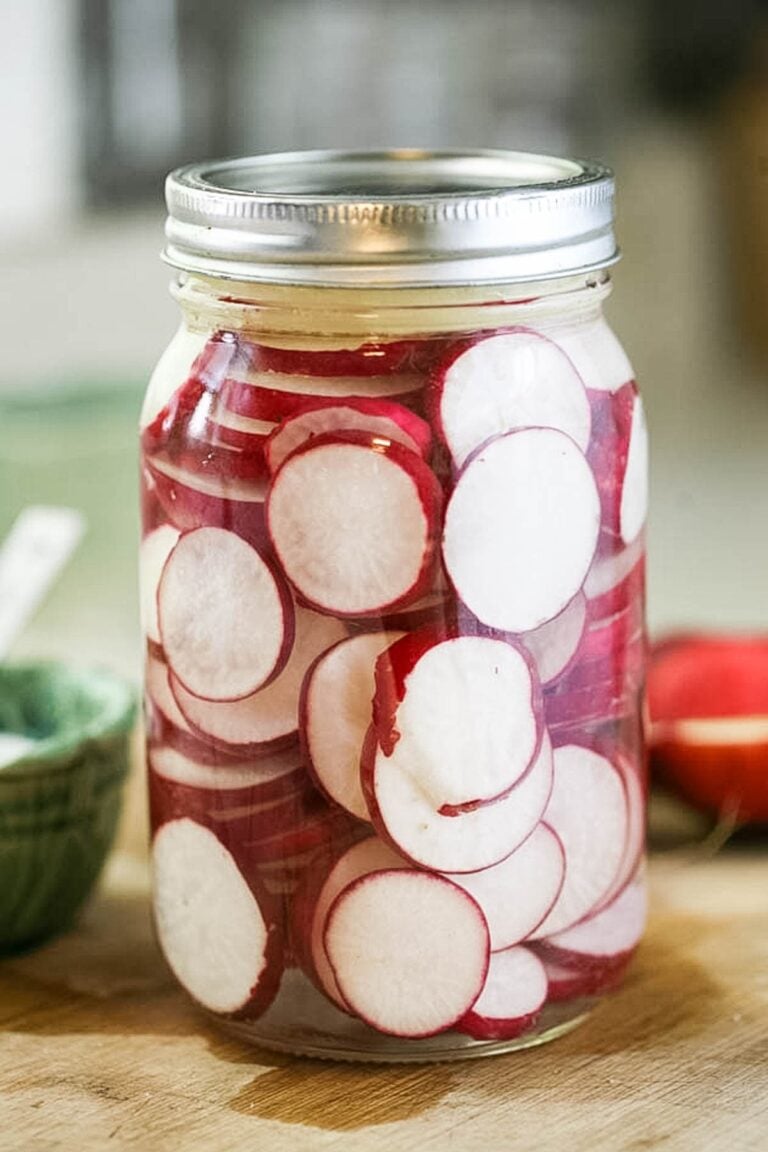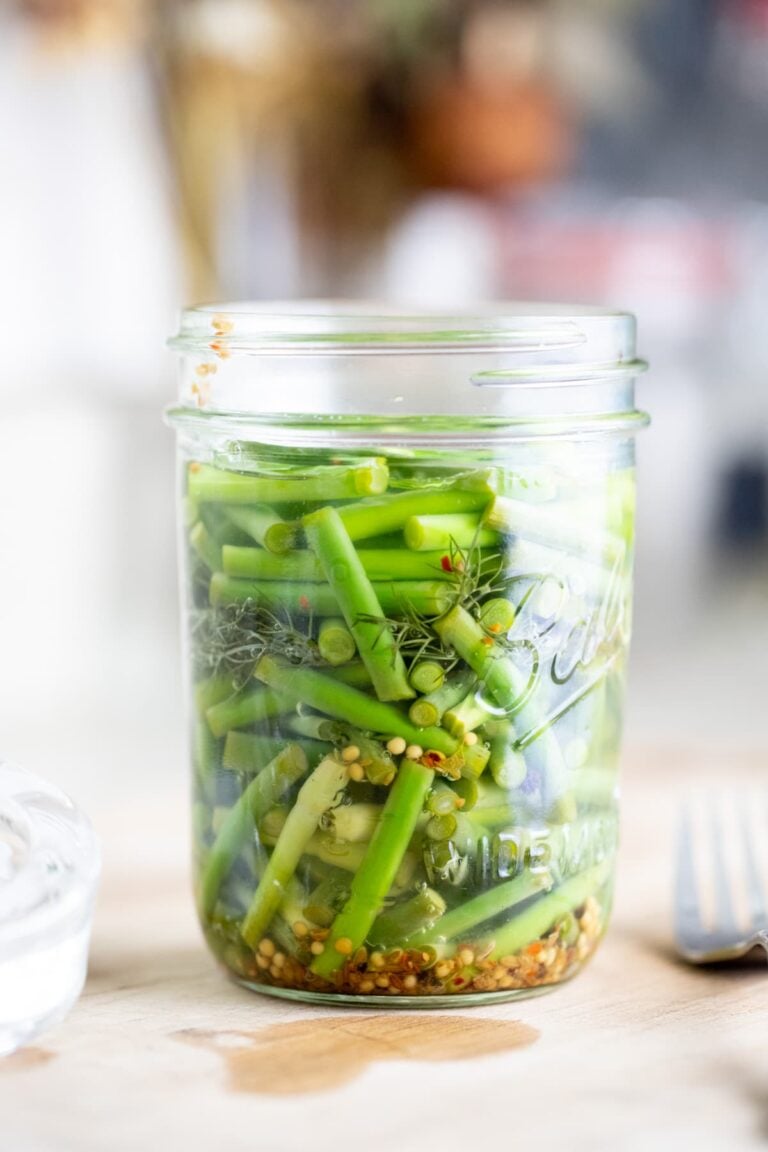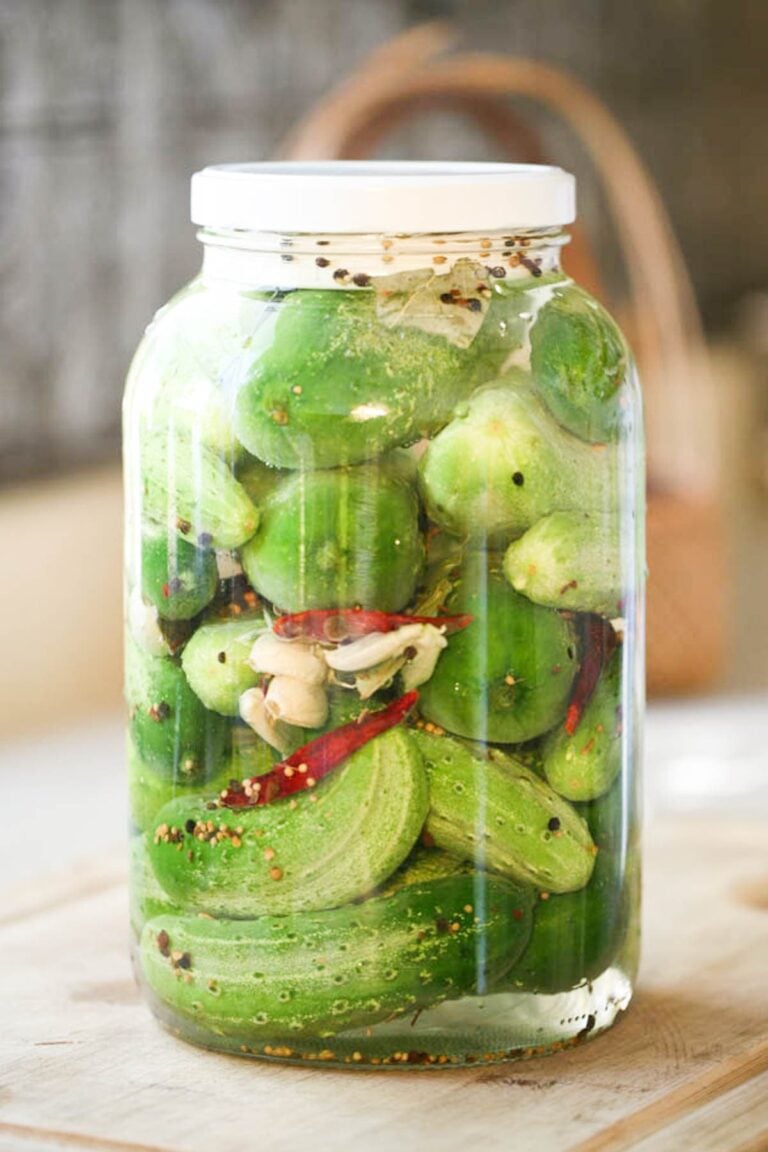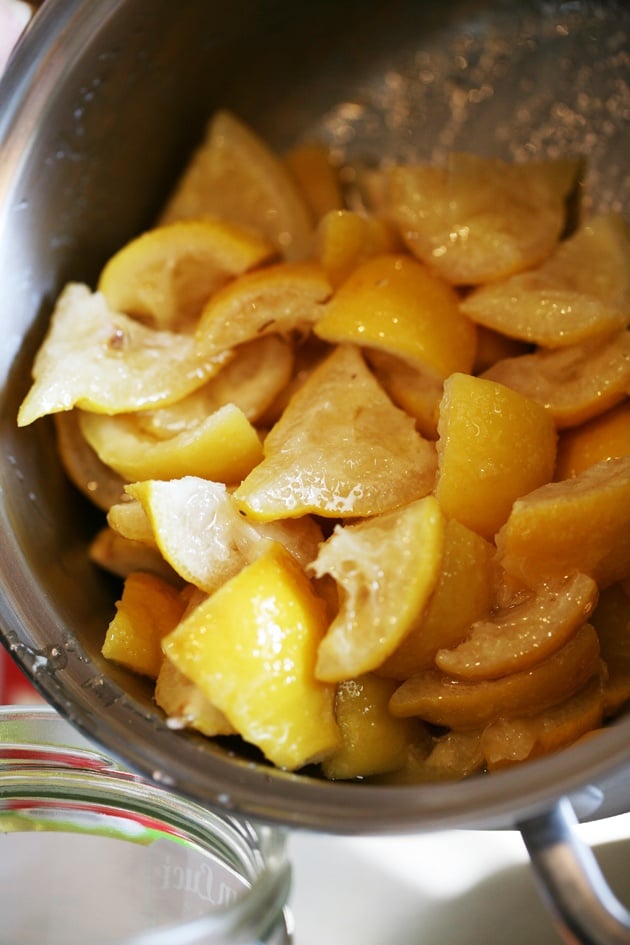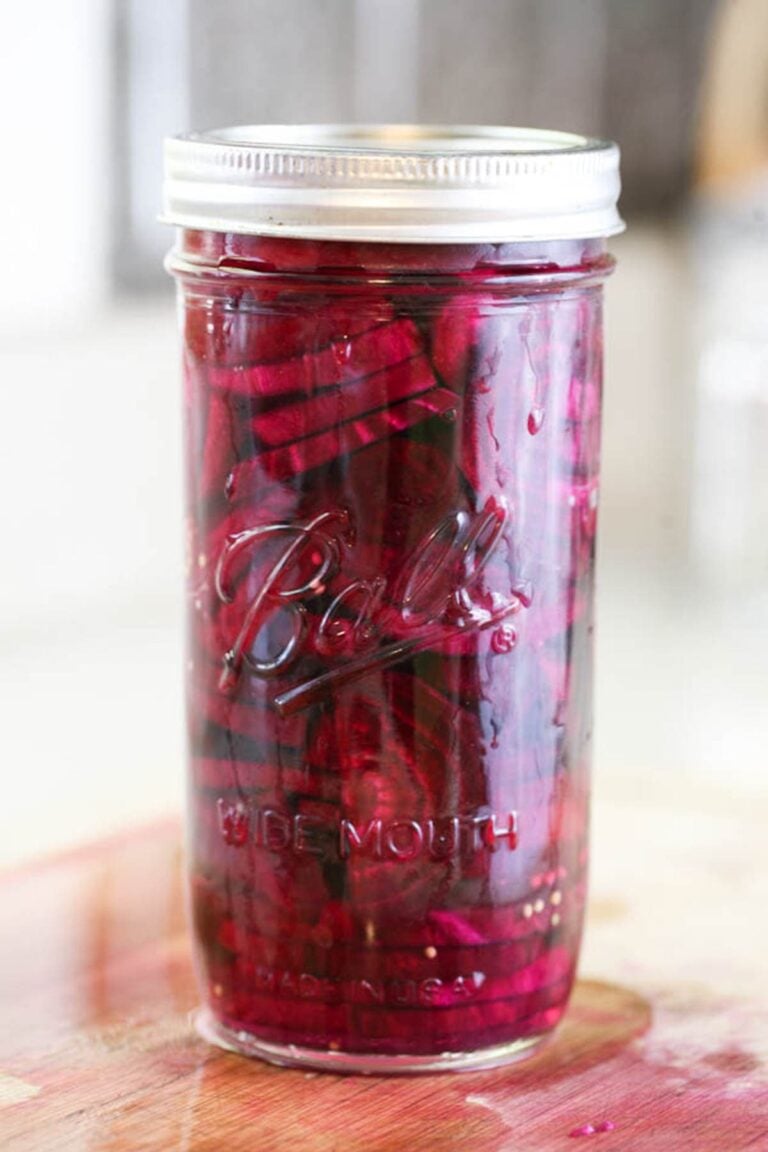Fermented Green Tomatoes
This post may contain affiliate links, view our disclosure policy for details.
Fermented green tomatoes are tangy, healthy, delicious, and super easy to make. This is not only a great way to use and preserve unripe tomatoes but it’s also a delicious snack or side dish.
I had a little bit of a mess in one of my tomato rows in the garden this year… Even though I am set on an amazing way to support my tomato plants (and all other climbing plants), this wonderful system doesn’t work with low tomato plants… The ones that don’t climb but are bushier.
So I ended up with a bunch of plants that fell over, broken branches, and green, unripe tomatoes lying on the ground. If you are a homesteader like me, you know that waste is not something we can easily deal with. Since we know how much work it takes to raise or grow food, we try to make the most of everything.
Fermented Green Tomato Recipe…
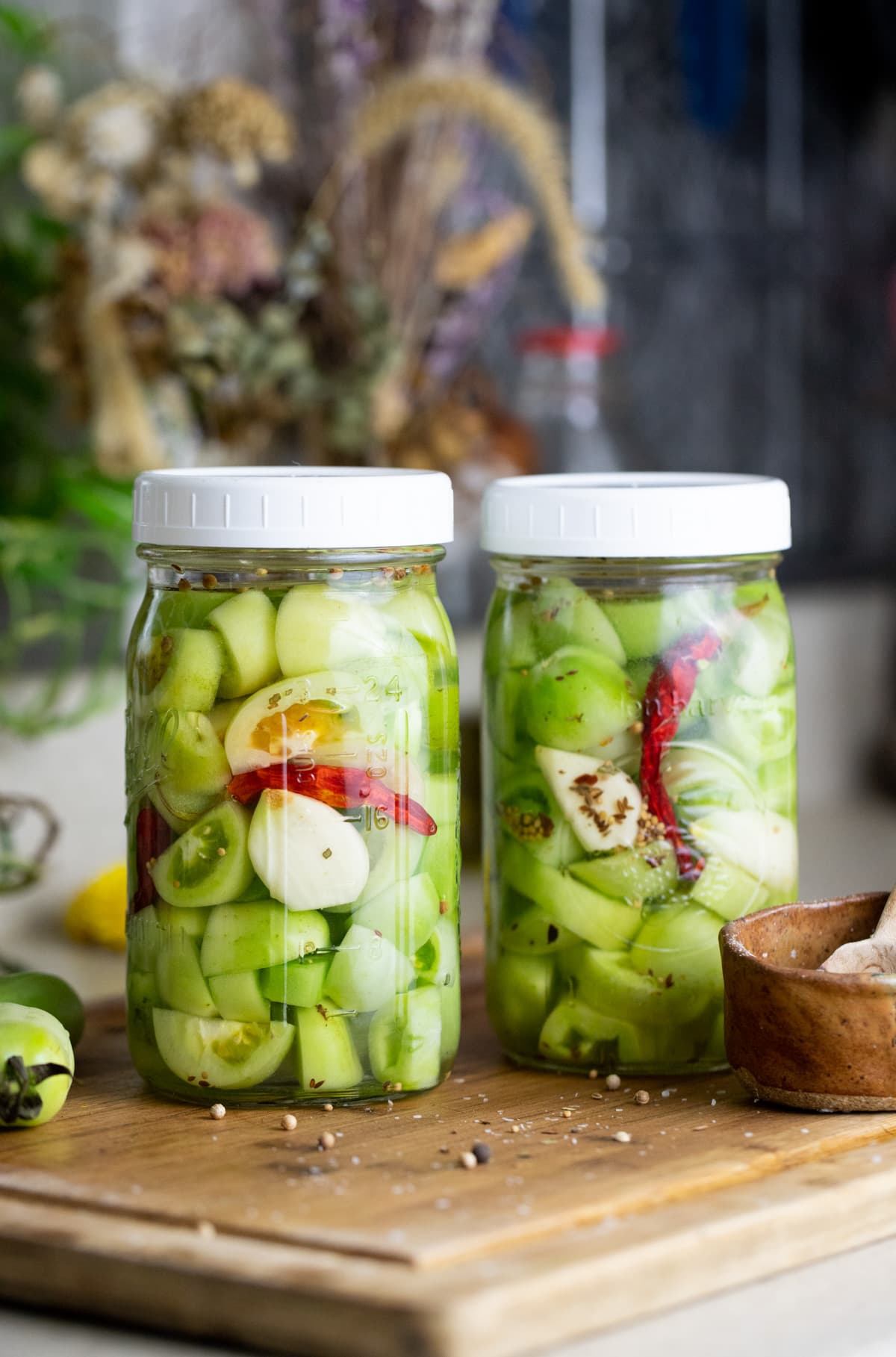
So, when I decided that it was time to clean up the mess I had to think of a way to use those green, unripe tomatoes. I have to admit that fried green tomatoes is one of my favorite summer dishes but, to be honest, I can’t handle eating too much fried food. So pickling green tomatoes was next (I wanted to preserve some) and then I figured I’d try to ferment some. They turned out delicious!
What is Fermentation…
Fermentation is the process of using microorganisms, such as bacteria or yeast, to convert carbohydrates to alcohol or organic acids under anaerobic conditions. There are a couple types of fermentation…
- Alcoholic fermentation is when we use yeast to break down sugars into carbon dioxide and ethanol. This is the process we use to make beer, wine, and bread.
- Lacto fermentation is the process of using bacteria, named Lactobacillus, to convert sugars into lactic acid. This bacteria (some form of it) is actually present in our digestive system naturally and is also present on the surface of plants. Lactic acid is a preservative that helps us preserve foods by preventing the growth of harmful bacteria. Lacto fermentation, which is the process we are going to use to preserve our green tomatoes, also increases the vitamin and enzyme level of the vegetables we ferment.
Adding fermented foods to our diet can help us introduce additional probiotics, or in other words, beneficial bacteria to our digestive system in a natural way. Beneficial bacteria help us digest food and help us support a healthy metabolism.
What Kind of Tomatoes to Use…
In these fermented green tomatoes, you want to make sure that you are using red tomatoes that haven’t ripened and therefore are still green. For example, tomatoes that you pick too early for whatever reason, or the end-of-the-season tomatoes that didn’t have a chance to ripen before temperatures started to drop into fall and winter temperatures.
Pay attention that there are, in fact, varieties of tomatoes that are green when they are ripe. We don’t want to use these (when they are ripe) in this dish, you can try fermenting them like I ferment red, ripe tomatoes. It doesn’t matter what kind of red tomatoes (or black, or brown, or orange) you use, the variety doesn’t matter. In fact, you can also use the tomatoes of the green variety, you just want to make sure that the tomatoes that you use are unripe tomatoes.
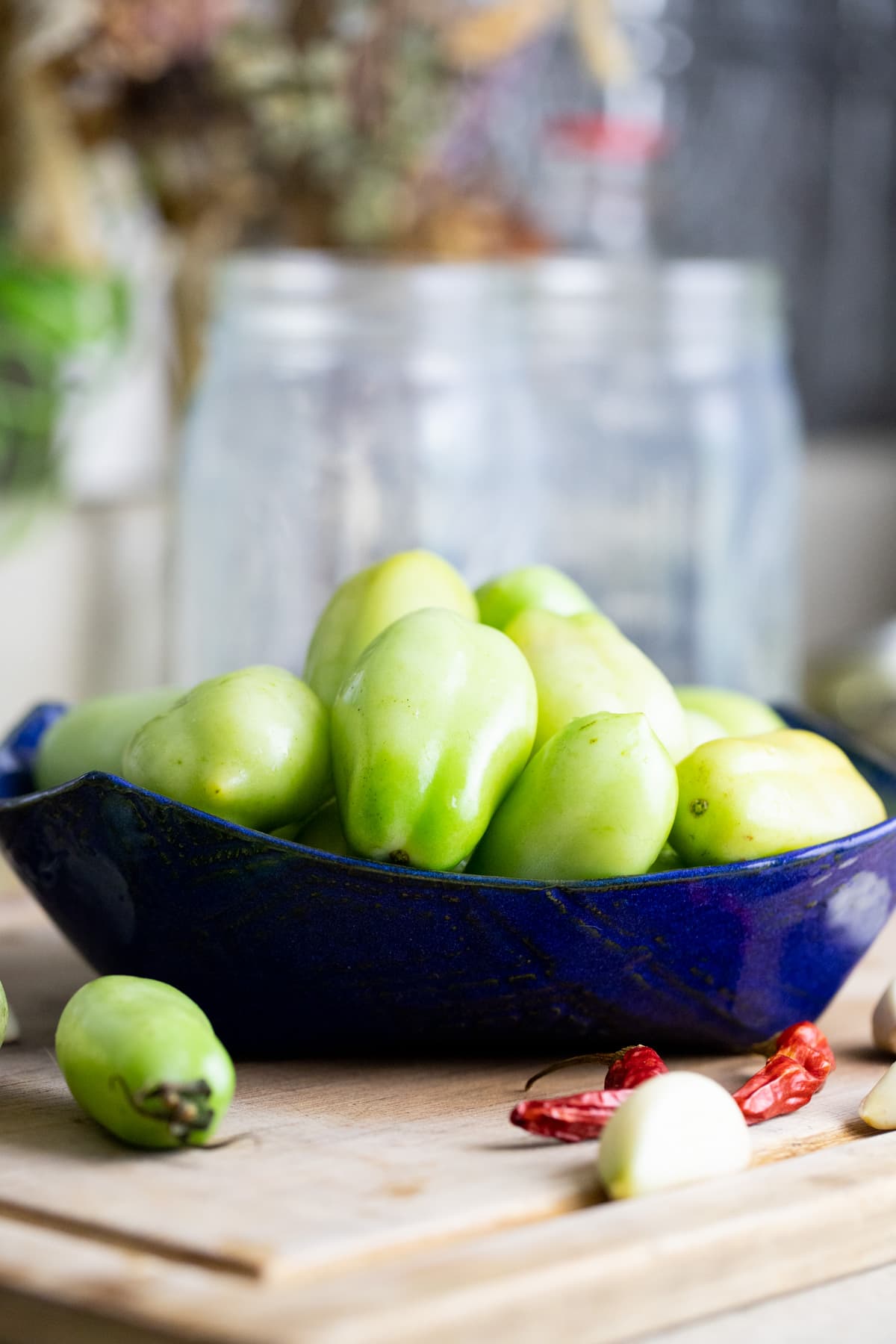
Ingredients…
- Green tomatoes
- Garlic
- Dry cayenne pepper
- Ball pickling mix
- For the brine: non-chlorinated water and non-iodized salt
Kitchen Tools…
- Cutting board
- Knife
- Jar with a lid – I use a wide-mouth quart jar but you can also use a pint jar with a wide mouth. Make sure to use a plastic freezer lid or a special fermentation lid.
- Measuring spoon
- 2 cup measuring cup
- Fermentation weight
How to Ferment Green Tomatoes…

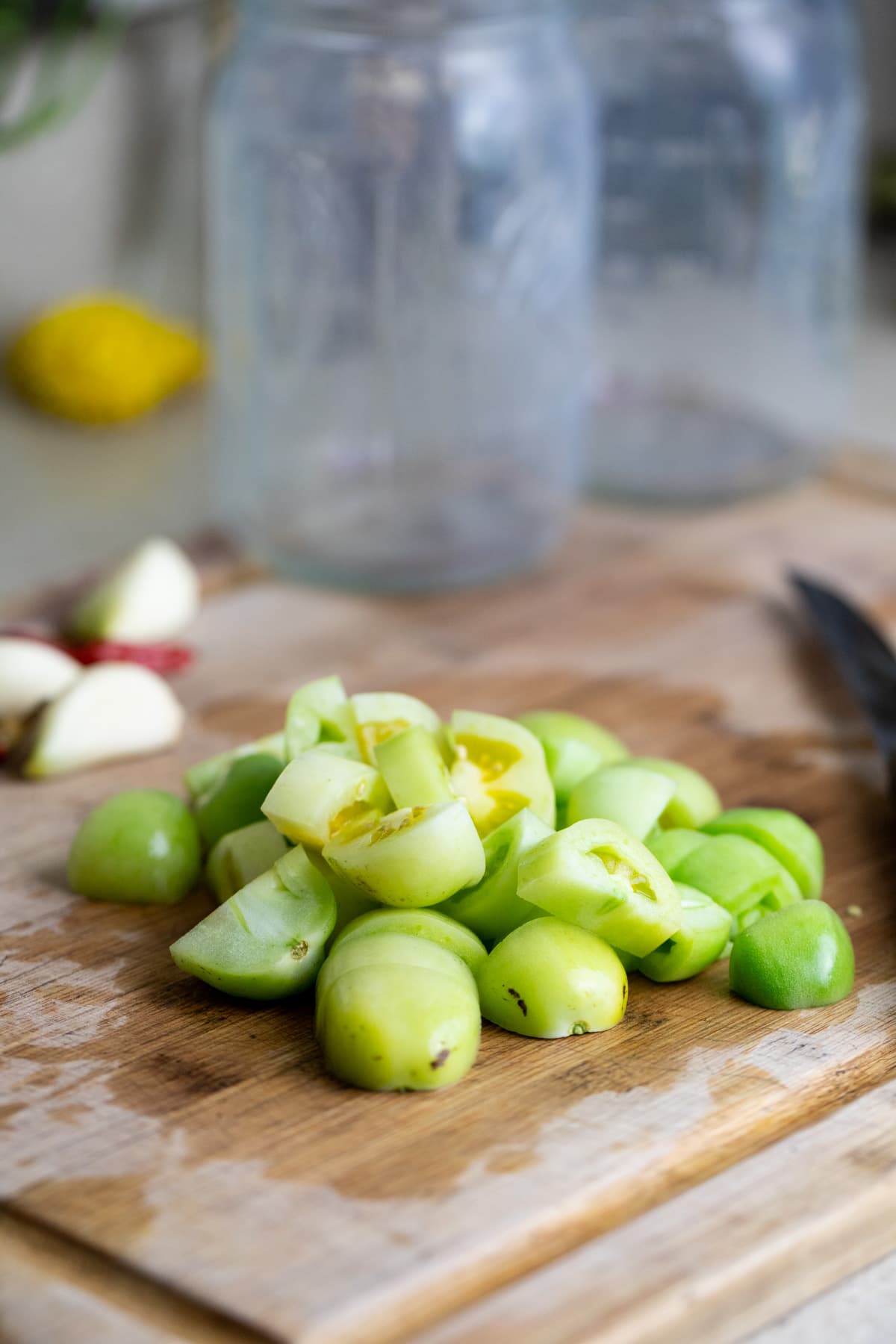
Step one – prep the ingredients. Wash the tomatoes well with cold water. Then halve them and then slice them into 1/2 inch thick slices. Also, peel a couple of garlic cloves per jar.

Step two – pack the jar. Pack the jar with the green tomatoes, garlic, and dry pepper. Make sure to leave about an inch of headspace. Add the Ball pickling mix on top of the vegetables.


Step three – add brine and close the jar. Make the brine by dissolving one teaspoon of salt per one cup of room-temperature water. Add the brine to the jar until it covers the vegetables. It’s important that you use non-chlorinated water. If you live in the city, make sure to use spring or distilled water from the store. It’s also important that you use non-iodized salt or in other words don’t use table salt. Instead, use kosher, sea, or canning salt.
Lastly, place the fermentation lid on top of the vegetables and press them down lightly. Make sure that all the vegetables are under the brine. Close the jar with the freezer lid (or a fermentation lid if you are using one), set the jar on a plate (some of the liquid will spill out during the fermentation process, the plate will help you catch the mess), and place the jar on the kitchen counter at room temperature to ferment.
After a couple of days, you’ll notice some bubbles forming at the top of the jar and the brine will start to look foggy. That’s great, this is how you know that the process of fermentation is on its way.
Remember that if you are not using a special lid for fermentation you will have to “burp” the jar, meaning once a day you’ll need to twist the lid open (don’t lift it) for a couple of seconds before twisting it back. This will let the gases that form inside the jar during the fermentation process a way to escape.
A quart jar will probably take 5-7 days to ferment. Usually, I tell people that you’ll know when the fermentation process has been completed because the brine will clear again. It’s never as clear as it is when we add it to the jar but it is noticeably clearer.

How to Store Fermented Green Tomatoes…
- At room temperature – it is possible to leave the jar at room temperature as long as you make sure that the vegetables are under the brine. Take into consideration that the vegetables are going to soften quickly though. So I say, if you leave the jar at room temperature, use the fermented green tomatoes within three weeks or so.
- In cold storage – the best way to store your fermented green tomatoes is in cold storage (40-45 degrees F). This can be in the fridge or a root cellar. Make sure that the tomatoes stay under the brine even while the jar is in cold storage and use a clean fork to scoop tomatoes out when you are ready to enjoy them. Fermented green tomatoes should easily last 6-8 months in cold storage.
How to Serve Fermented Green Tomatoes…
- As a snack – they are firm and earthy and salty. I love scooping a few tomatoes into a bowl and snacking on them. It’s so much better than reaching for a cookie.
- As a side – fermented green tomatoes are a great side for an easy sandwich lunch. Add them as a side to a burger instead of the fries, add them as a side to a meat wrap, or a BBQ sandwich or any other.
Add them as a side to this Mediterranean zucchini casserole, or serve them with zucchini and corn fritters, or lentil patties for a simple vegetarian lunch or breakfast. - Throw them in salads – they are a delicious, salty addition to any salad. I sometimes add them to my favorite Mediterranean egg salad or a classic Israeli salad.
Frequently Asked Questions…
You can spice these fermented green tomatoes however you want. Add jalapenos instead of cayenne or leave the spicy pepper out (or use chili flakes instead). Use only whole mustard or peppercorn or any other spice you like.
If you notice a white film forming on top of the brine don’t worry! The white film is kahm yeast and is not harmful. It develops when the sugars are used up and the pH of the ferment drops because of the lactic acid formation. Simply scoop it out when the ferment is done. More will develop but just scrape it off when you’re ready to eat your fermented green tomatoes.
If your ferment develops raised and fuzzy black, pink, green, or blue mold throw it out. Be sure to clean all the utensils and vessels well.
They are very firm and hard and the brine might not be able to reach the inside of the tomato if you leave them whole. At least half them, but if for some reason you really want to leave them whole then make sure to poke some holes in the tomatoes with a toothpick so the brine can reach the inside.
You can try, however, you might want to leave the ripe tomatoes whole while slicing the green tomatoes. If you slice the ripe tomatoes you are going to have a messy tomato juice thingy going on (I am guessing here cause I haven’t tried it).
Fermented green tomatoes are an easy way to preserve and use green, unripe tomatoes. This dish is really easy to put together and the result is both delicious and healthy. If you find yourself with some green tomatoes, I hope that you’ll give this a try!
More Fermenting Tutorials…
- Fermenting Turnips
- Fermented Jalapenos
- Fermented Garlic Scapes
- Fermented Cauliflower
- Fermenting Beets
- Preserving Peppers in Vinegar and Salt
- Preserving Whole Lemons

Fermented Green Tomatoes
Lacto fermented green (unripe) tomatoes.
Ingredients
- Green tomatoes (enough to fill a couple of quart jars. I used about 20 small tomatoes)
- 4 cloves of garlic, peeled
- 4 dry cayenne peppers
- 4 teaspoons of Ball seasoning mix
For the brine:
- 4 cups of non-chlorinated water
- 4 teaspoons of non-iodized salt (Kosher, sea, or canning salt)
Instructions
- Wash the tomatoes well with cold water. Halve them, then slice them into 1/2 inch thick slices.
- Pack the jar with the green tomatoes, garlic, and dry pepper. Make sure to leave about an inch of headspace. Add the Ball pickling mix on top of the vegetables.
- Make the brine by dissolving one teaspoon of salt per one cup of room-temperature water. Add the brine to the jar until it covers the vegetables.
- Lastly, place the fermentation lid on top of the vegetables and press them down lightly. Make sure that all the vegetables are under the brine. Close the jar with the freezer lid (or a fermentation lid if you are using one), set the jar on a plate (some of the liquid will spill out during the fermentation process, the plate will help you catch the mess), and place the jar on the kitchen counter at room temperature to ferment.
After a couple of days, you’ll notice some bubbles forming at the top of the jar and the brine will start to look foggy. That’s great, this is how you know that the process of fermentation is on its way.
Remember that if you are not using a special lid for fermentation you will have to “burp” the jar, meaning once a day you’ll need to twist the lid open (don’t lift it) for a couple of seconds before twisting it back. This will let the gases that form inside the jar during the fermentation process a way to escape.
A quart jar will probably take 5-7 days to ferment. Usually, I tell people that you’ll know when the fermentation process has been completed because the brine will clear again. It’s never as clear as it is when we add it to the jar but it is noticeably clearer.
Notes
Frequently Asked Questions...
- Are there other spices I can use instead of the Ball mix?
You can spice these fermented green tomatoes however you want. Add jalapenos instead of cayenne or leave the spicy pepper out (or use chili flakes instead). Use only whole mustard or peppercorn or any other spice you like. - What is the white film on top? Is it dangerous? Do I have to throw the whole jar out?
If you notice a white film forming on top of the brine don’t worry! The white film is kahm yeast and is not harmful. It develops when the sugars are used up and the pH of the ferment drops because of the lactic acid formation. Simply scoop it out when the ferment is done. More will develop but just scrape it off when you’re ready to eat your fermented green tomatoes. - If mold develops can I just scrape it off?
If your ferment develops raised and fuzzy black, pink, green, or blue mold throw it out. Be sure to clean all the utensils and vessels well. - Can I ferment green tomatoes whole?
They are very firm and hard and the brine might not be able to reach the inside of the tomato if you leave them whole. I’d say, at least half them, but if for some reason you really want to leave them whole then make sure to poke some holes in the tomatoes with a toothpick so the brine can reach the inside. - Can I ferment green, unripe tomatoes and red, ripe tomatoes together?
You can try, however, you might want to leave the ripe tomatoes whole while slicing the green tomatoes. If you slice the ripe tomatoes you are going to have a messy tomato juice thingy going on (I am guessing here cause I haven't tried it).
Nutrition Information:
Yield: 2 Serving Size: 1Amount Per Serving: Calories: 60Total Fat: 2gSaturated Fat: 0gTrans Fat: 0gUnsaturated Fat: 1gCholesterol: 0mgSodium: 4138mgCarbohydrates: 13gFiber: 4gSugar: 4gProtein: 2g

Hi! I’m Lady Lee. I help homesteaders simplify their homesteading journey while still producing a ton of food! I am a single mother of four, I was born in Israel and raised in an agricultural commune called a Kibbutz. Now I homestead in central NC.


